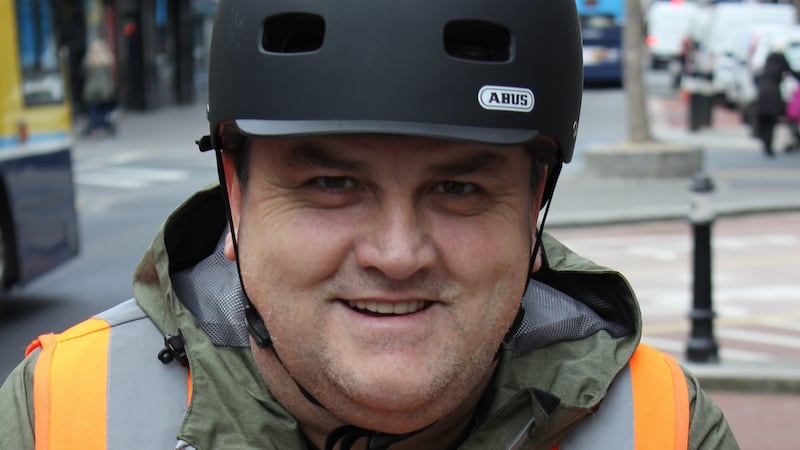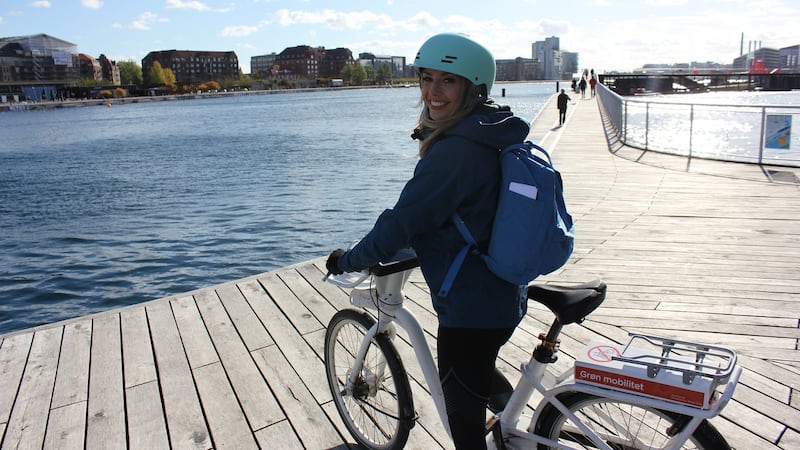The laziest answer to road safety concerns is always a matter of visibility. If only every cyclist wore a luminous hi-vis vest, an array of front and back lights and, preferably, a motorised steel and glass casing with two extra wheels, then, finally, there would be peace and harmony on the roads, goes one argument, entirely from the motorist’s perspective.
If only Ireland had cycling infrastructure worth a damn, with segregated lanes that don't merrily intersect with street parking, tram tracks and bus stops, maybe cycling would be safer and more popular, say the cyclists.
Now You See Me (RTÉ One, Monday, 7.30pm), a four-part public safety programme thinly disguised as a magazine-style show (and made with the Road Safety Authority) is about achieving better visibility too, by attempting to make both parties seen to each other.
"You ask any Irish driver what their biggest aggravation on the road is and chances are going to say cyclists," says no-nonsense Dublin driver Simon Delaney, adding that the reverse is true. But when the programme reports that 80 per cent of cyclists also drive, and only 10 per cent of drivers also cycle, that doesn't seem entirely true. (Personally speaking, as a driver, my biggest aggravation is other drivers; as a cyclist, it's other cyclists... Hell is other road users.) But the contention of the show is that this road isn't big enough for the both of us. So which party needs to give an inch?

Although Delaney is presented as a drive-only sceptic ready for gentle persuasion, while co-presenter Bláthnaid Treacy travels the world in search of better cycling conditions, the programme feels like its proselytising for more pedal-pushers. Many campaigners appeal to the health and environment benefits of cycling. A young Donegal family, experimenting with bicycle-only commutes, praise “a really nice bonding thing” with the kids, and later a feeling of being “more connected”.
But appealing to our sense of virtue is never that convincing, and I wonder about the wisdom of presenting cycling as something good for you, like eating your greens, taking cold showers (which Irish cyclists experience anyway) or watching magazine-style shows about road safety.

More insightful is a segment about Copenhagen, “the mecca of the bicycle” as Treacy puts it, where she has come not to worship but to question. Copenhagen’s cycling culture is not the product of intrinsically European clean living, but rather an oil-crisis and a gathering of political pressure 40 years ago that pushed the city into adequate provision of segregated laneways, clean and corresponding traffic systems, enforced legislation that punishes bad driving and bad cycling, and a culture that has come to expect it. Now, 60 per cent of the population cycles a daily commute. What about the cold showers? “We just dress for it,” says one resident.
Later episodes promise to follow Delaney, always an amiable presence, as he mounts the experience of two-wheeled transport in the city. It can be hairy, as we see in ample evidence of flung-open car doors, lane-cutting van swerves, and lycra-swaddled macho racers. But it can also be fun, which is the part of cycling that is harder to see. Saddled with health benefits and political challenges, cycling looks like a chore. In truth, it’s a joy, when there isn’t so much riding on it.












